Mint leaves also known as Pudina is a popular aromatic herb widely used for its freshness and health benefits. Since ancient times, people have used different varieties of mint all over the world. All these varieties offer a lot of antioxidant properties and health benefits1,2.
Science suggests4 that mint has many of health benefits for your body but ensure to take it under the supervision of a healthcare provider to be certain that it can be beneficial to your case. Here are some of the ways that mint can help your body stay healthy.
Mint leaves are known to be an amazing appetiser. It helps to promote the digestive system by stimulating digestive enzymes. Mint oil has antiseptic and antibacterial properties to relieve indigestion, stomach infections, etc. It acts as an anti-spasmodic agent due to the presence of methanol5.
Irritable Bowel Syndrome is a common disorder of the digestive system. It can cause stomach pain, constipation, diarrhoea, bloating, and indigestion. The main and important treatment for irritable bowel syndrome is a change of diet but some studies have shown that mint oil can be helpful.
Mint oil contains a compound called menthol which gives relaxing effects on the muscles of the digestive tract2,3.
Mint leaves are highly recommended for asthma patients, as it acts as a good relaxant and relieves chest congestion. Consumption of mint leaves daily can give a soothing effect for asthmatic patients.
Mint is known to clear a stuffed nose, menthol can make breathing a lot easier. It also relieves the irritation caused by a chronic cough2.
Mint leaves can help freshen your breath instantly due to the presence of germicidal properties. You can chew on mint leaves to get rid of the strong odours like after having a meal with garlic.
Mint leaves extract can help to clear plaque deposition on teeth. Menthol-containing toothpaste, mouthwash, or chewing gums can reduce oral bacterial growth and help keep your oral cavity clean3.
Mint leaves are brain tonic. According to various studies, consuming mint may increase alertness and cognitive functions6. Mint leaves can improve memory power and mental alertness.
Mint is full of vitamins and antioxidants to improve your immunity. These plant-based vitamins help to protect your cells from damage. Also, mint leaves can prevent tumour formation by inhibiting some enzymes6.
Mint is an essential part of aromatherapy. Its strong and refreshing smell could help with stress and rejuvenate the mind. By breathing in the infusion of mint, your mind may be instantly calmed.
You may find it beneficial to add mint to your tea, use mint extract on a vaporiser or take a mint bath for immediate relief from stress and anxiety6.
Breastfeeding mothers commonly experience sore and cracked nipples, which can make breastfeeding painful and difficult. Clinical studies2 have found that applying mint essential oil is valuable in easing pain and heals soreness and helps with cracked nipples.
Let me tell you about a special ingredient called menthol present in mint oil. Menthol oil may help relieve menstrual cramps in women9.
Dr. Anuja Bodhare, B.A.M.S, M.D (Ayu)
Mint leaves play an essential role in losing weight in a healthy way. Mint leaves promote digestion and boost metabolism to help in losing weight. Mint tea is a great refreshing calorie-free beverage to promote weight loss5.
Mint is an ancient medicine to treat skin-related problems like acne, scar. The powerful antibacterial, antifungal, and anti-inflammatory properties of mint leaves are effective in treating acne and lowers the inflammation and redness associated with acne outbursts.
Mint leaves contain high salicylic acid and vitamin A which controls the secretion of sebum oil in the skin and helps to cure acne.
Mint leaves extract is useful to treat and prevent acne. The richness of menthol and natural antioxidants in mint leaves are used as an amazing cleanser, toner, astringent and moisturizer for the skin. Mint leaves tones the skin, softens dry and itchy skin3,6.
In my opinion, mint leaves can be considered as little defenders fighting against bacteria and fungi. Studies11 have found that oil, made from mint leaves, may be extremely effective. In fact, it was functional against 22 bacterial strains and 11 fungal strains!
Dr. Rajeev Singh, BAMS
Mint leaves extract is a great source of carotene and antioxidants that promote hair growth and prevent hair fall. The potent antimicrobial and antifungal properties of mint leaves used to ward off dandruff, head lice, etc.
You can apply mint leaves paste mixed with lemon juice on the hair scalp and allow it to stay for 30 to 40 minutes and rinse the hair well6.
Mint is an excellent remedy to treat nausea. It is also effective for treating nausea that happens in morning sickness7.
Recent studies2 have suggested that mint contains compounds that have anti-allergic properties and can be beneficial to individuals with allergies.
I came across a study10 in which mint leaf extracts were studied for their effects on allergic rhinitis in mice. These extracts possibly helped to reduce histamine release from mast cells and relieved nasal symptoms in rats. This suggests that peppermint extracts might help relieve allergic rhinitis symptoms.
Dr. Siddharth Gupta, B.A.M.S, M.D (Ayu)
A clinical study on rats conducted in 2019 has proven that the compounds in mint are indeed more effective in the treatment of asthmatic symptoms than the traditional medicine known as dexamethasone. This study suggests that mint may have similar effects on humans as well. Therefore, consuming mint may help to ease symptoms of asthma to some extent6.
The nutritional facts of peppermint or commonly known as mint, state that it can provide a healthy dose of balanced nutrition as well. Two tablespoons of mint contain approximately 0.24g of protein, 0.96g of carbohydrates, 0.52g of dietary fiber, 2.04mg of Vitamin C, 15.56mg of calcium, 4.68mg of phosphorus, and 36.42mg of potassium, among other nutrients8.
Based on my experience, mint leaves aren’t just tasty and refreshing, they may also have some impressive anti-tumour powers. In studies conducted on mice, mint leaves have shown promising results in fighting against tumours9.
Dr. Smita Barode, B.A.M.S, M.S.
Mint leaves are generally safe for consumption, however people with gastroesophageal reflux disease should minimise the consumption as it may cause stomach irritation. Menthol oil is contraindicated in children to use topically as it may cause breathing difficulties3.
Also Read: 10 Foods To Reduce Body Heat Naturally
According to Ayurvedic medicine, mint is a valuable herb with a lot of benefits3. You may find it benefitting to add mint to your diet as it is full of antioxidants, vitamins, iron, and more. But ensure to consult a doctor before making any changes to your diet6.
Also Read: Incredible Health Benefits of Guava Fruit & Its Leaves
Yes, mint leaves can be eaten raw. They are commonly used to add a fresh, aromatic flavor to salads, beverages, and garnishes.
Mint leaves can be used for a variety of purposes, including flavouring foods and beverages, making teas, or as a garnish. They also have medicinal properties to help with conditions, such as digestion, soothing headaches, and providing relief from cold symptoms. Additionally, mint is often used in skincare products for its refreshing and soothing properties.
Mint leaves can help alleviate cough symptoms due to their menthol content, which has soothing and decongestant properties. However, they are not a cure and is recommended to be used alongside other treatments for best results.
Mint leaves are not known to lower blood pressure directly. While they have various health benefits, there is no strong evidence supporting their use for blood pressure reduction. Always consult with a healthcare provider for managing blood pressure.
There is no scientific evidence to suggest that mint leaves can induce periods. While mint has various health benefits, it is not known to influence menstrual cycles.
Mint leaves contain antioxidants and vitamin C, which can help improve skin health, but there is limited evidence that they effectively remove dark spots. They might offer some benefits when used in skincare routines, but results can vary.
Yes, mint leaves have a cooling effect on the body. They contain menthol, which can create a cooling sensation when consumed or applied topically, helping to refresh and soothe the body.
Mint leaves are generally soothing for the digestive system and are not known to cause acidity. In fact, they can help alleviate symptoms of indigestion and heartburn for some people. However, individual reactions can vary, and some might experience increased acidity.
Yes, chewing mint leaves can freshen your breath. Mint contains compounds like menthol that have a refreshing and cooling effect on the mouth, which can help mask bad breath odors.
Yes, mint leaves contain vitamin K. Vitamin K is essential for blood clotting and bone health, and mint leaves provide a small amount of this nutrient along with other vitamins and minerals.
Drinking mint water in the morning offers several health benefits. It helps with digestion, reduces bloating, and can help freshen breath. Additionally, mint water has a soothing effect on the stomach and may enhance mental alertness and focus, providing a refreshing start to your day.
Yes, mint leaves do contain salicylic acid, albeit in small amounts. Salicylic acid, known for its anti-inflammatory and exfoliating properties, contributes to the therapeutic benefits of mint, making it useful in skincare and as a natural pain reliever.
Mint leaves have natural antibacterial properties and contain menthol, which can help soothe inflammation and reduce the appearance of pimples. Creating a homemade mint paste or applying mint-infused toner may help in calming irritated skin and preventing future breakouts, but individual results may vary and requires a doctor’s guidance.
Despite their refreshing taste, mint leaves are mildly acidic in nature. They typically have a pH ranging from 6.0 to 7.0, making them slightly acidic. This acidity can contribute to their ability to help in digestion and provide relief from indigestion.
1. Habib S, Faris AA, Faisal M. Pudina (Mentha) in Traditional Medicine: A Review Introduction [Internet]. 2021 [cited 2025 Apr 24]. Available from: https://www.researchgate.net/publication/348895136_Pudina_Mentha_in_Traditional_Medicine_A_Review_Introduction
2. Wani SA, Naik H, Wagay J, Ganie NA, Mulla MZ, Dar BN. Mentha: A review on its bioactive compounds and potential health benefits. Quality Assurance and Safety of Crops & Foods [Internet]. 2022 Oct 21 [cited 2025 Apr 24];14(4):154–68. Available from: https://www.researchgate.net/publication/364685356_Mentha_A_review_on_its_bioactive_compounds_and_potential_health_benefits
3. US Department of Agriculture. FoodData Central [Internet]. Usda.gov. 2019 [cited 2025 Apr 24]. Available from: https://fdc.nal.usda.gov/food-details/173475/nutrients?utf8=%E2%9C%93&affiliate=usda&query=mint&commit=Search
4. Tafrihi M, Imran M, Tufail T, Gondal TA, Caruso G, Sharma S, et al. The Wonderful Activities of the Genus Mentha: Not Only Antioxidant Properties. Molecules [Internet]. 2021 Feb 20 [cited 2025 Apr 24];26(4):1118. Available from: https://pmc.ncbi.nlm.nih.gov/articles/PMC7923432/
5. Moloudizargari M, Aghajanshakeri S, Mikaili P, Mojaverrostami S. Pharmacological and therapeutic effects of Mentha Longifolia L. and its main constituent, menthol. Ancient Science of Life [Internet]. 2013 [cited 2025 Apr 24];33(2):129. Available from: https://www.ncbi.nlm.nih.gov/pmc/articles/PMC4171855/
6. Zhao H, Ren S, Yang H, Tang S, Guo C, Liu M, et al. Peppermint essential oil: its phytochemistry, biological activity, pharmacological effect and application. Biomedicine & Pharmacotherapy [Internet]. 2022 Oct [cited 2025 Apr 24];154(113559):113559. Available from: https://www.sciencedirect.com/science/article/pii/S0753332222009489?via%3Dihub
7. Sharma N, Sharma DP, Singh S. Effect of peppermint tea on morning sickness: Narrative Review. Journal of Emerging Technologies and Innovative Research [Internet]. 2025 Jan 1 [cited 2025 Apr 24];12(1):d291–8. Available from: https://www.researchgate.net/publication/388462586_Effect_of_peppermint_tea_on_morning_sickness_Narrative_Review
8. Content – Health Encyclopedia – University of Rochester Medical Center [Internet]. Rochester.edu. 2025 [cited 2025 Apr 24]. Available from: https://www.urmc.rochester.edu/encyclopedia/content?contenttypeid=76&contentid=02064-1
9. L NK, Bhattacharjee A, Hegde K, Shabaraya AR. A detailed review on pharmacological profile of Mentha piperita. Rajiv Gandhi University of Health Sciences Journal of Pharmaceutical Sciences. 2020 [cited 2025 May 26]. Available from: https://www.researchgate.net/publication/351691322_A_Detailed_Review_on_Pharmacological_Profile_of_Mentha_piperita
10. Inoue T, Sugimoto Y, Masuda H, Kamei C. Effects of peppermint (Mentha piperita L.) extracts on experimental allergic rhinitis in rats. Biological and Pharmaceutical Bulletin. 2001 [cited 2025 May 26]. Available from: https://pubmed.ncbi.nlm.nih.gov/11201253/
11. Antibacterial and antifungal activity of ten essential oils in vitro. PubMed. 1996 [cited 2025 May 26]. Available from: https://pubmed.ncbi.nlm.nih.gov/8893526/
Disclaimer: The information provided here is for educational/awareness purposes only and is not intended to be a substitute for medical treatment by a healthcare professional and should not be relied upon to diagnose or treat any medical condition. The reader should consult a registered medical practitioner to determine the appropriateness of the information and before consuming any medication. PharmEasy does not provide any guarantee or warranty (express or implied) regarding the accuracy, adequacy, completeness, legality, reliability or usefulness of the information; and disclaims any liability arising thereof.
Looking for a healthy as well as tasty snack? Pumpkin seeds are the perfect choice! These seeds offer many health benefits and a delicious, sweet and nutty taste that you’ll enjoy. From promoting heart health to helping you sleep better, pumpkin seeds are a powerhouse of nutrition. In this article, we’ll share 14 health benefits of pumpkin seeds, but first, let’s look at their nutritional content.
Friendly Reminder: The information shared here is for educational purposes only and the reader should consult a registered medical practitioner before implementing any changes to their health routine.
There are many benefits to eating pumpkin seeds. Let’s check them out.
Pumpkin seeds have antioxidant potential due to Vitamin E and carotenoids. These antioxidants help reduce inflammation and protect our body from damage caused by free radicals[1].
Pumpkin seeds are good for heart health. Their antioxidants protect the heart from various disorders. Magnesium in pumpkin seeds helps regulate blood pressure. It also lowers bad cholesterol (LDL) levels and triglycerides, which makes it beneficial for people with high blood pressure and heart disease[2]. Fibre present in pumpkin seeds also reduces cholesterol levels, thus protecting our hearts[4].
Consuming pumpkin seeds in moderation may reduce some risk factors related to gastric, breast, and colorectal cancers[6]. This is due to the presence of powerful antioxidants in these seeds. Carotenoids in pumpkin seeds benefit in reducing the risk of prostate cancer[1].
For those managing diabetes, pumpkin seeds are a boon. Rich in magnesium, proteins, and fibres, they are known to benefit people with diabetes mellitus. These nutrients, when included in a diabetes diet plan, can help regulate blood sugar levels effectively[1].
Pumpkin seeds are good for our immune system due to the presence of vitamin E and zinc. Vitamin E enhances immune responses and protects against several infectious diseases[12]. It is also a powerful antioxidant and prevents free radicals from damaging healthy cells in our bodies. Zinc protects our body from inflammation, allergies and invading pathogens, thus preventing infections and increasing overall immunity. Pumpkin seeds exhibit antimicrobial, antifungal and antiviral properties.
Amino acid tryptophan present in pumpkin seeds is good for sleep. It is a precursor to serotonin and melatonin. Both serotonin and melatonin help regulate the sleep-wake cycle[7].
Pumpkin seeds are rich in proteins and fibre. They make us feel full for a long time, reduce our food intake, and reduce the number of calories consumed. This makes them a good addition to a weight-loss diet.
Pumpkin seeds are rich in magnesium. Magnesium is good for the growth and strength of bones. It has been observed that people with ample amounts of magnesium in their diet tend to have a higher density of minerals in their bones. This helps to avoid risks like bone fractures and osteoporosis[10]. Low levels of magnesium have also been linked to increased inflammation. Another side effect of magnesium deficiency is that calcium levels in the blood also get low.
For those dealing with Benign Prostatic Hyperplasia (BPH), pumpkin seeds can be a helpful addition to their diet. Rich in zinc, these seeds reduce the chances of prostate cancer[6]. Limited data[13] suggests that pumpkin seed oil may help treat and prevent urinary diseases/disorders.
Pumpkin seeds are rich in zinc. Zinc plays a supportive role in male fertility as it may help support the quality and quantity of sperm[5].
Pumpkin seeds can be beneficial during pregnancy as they contain good zinc. Zinc boosts immunity and helps the baby grow healthy[8]. It is helpful to consume zinc-rich foods during pregnancy. Pregnant and breastfeeding women should not consume anything against their doctor’s advice.
The magnesium and tryptophan in pumpkin seeds may help improve sleep patterns. They may also support relaxation and ease of depression and anxiety symptoms[9].
Pumpkin seeds’ benefits for hair include promoting healthy, strong strands with their rich nutrients. Consuming them makes our hair strong, silky, and shiny.
Pumpkin seeds contribute to skin health. The zinc in pumpkin seeds helps improve collagen production[11], which helps in the repair and rejuvenation of the skin. These nutrient-dense seeds may help ease skin problems when consumed in addition to a healthy diet and lifestyle.
Pumpkin seeds are not considered highly allergenic, but you may experience an allergy in rare cases. People allergic to pumpkin seeds may show symptoms like headaches, itching, rashes, difficulty breathing, etc. If you are worried about having an allergy to pumpkin seeds, speak with your doctor before trying them out, especially if you have never eaten them.
Also Read: 14 Amazing Health Benefits of Pumpkin Seeds!
The best way to use pumpkin seeds is to roast them and have them as a snack. We also get pumpkin seed oil and pumpkin seed butter in the market. These seeds can also be added to or sprinkled on:
A powerhouse of nutrition, pumpkin seeds support better heart health and digestion; they’re a delicious snack that promotes overall well-being and are easy to add to your diet.
Also Read: 15 Amazing Health Benefits of Papaya Seeds That You Should Know!
Pumpkin seeds are generally high in fibre, which helps prevent constipation in some individuals. However, if you have an underlying digestive condition or consume them in excessive amounts, they may contribute to constipation. It’s advisable to discuss any concerns with a healthcare professional.
Pumpkin seeds can support weight loss as they are rich in protein and fibre, promoting feelings of fullness and curbing overeating. However, weight loss depends on overall diet and lifestyle factors. It’s advisable to consult with a healthcare professional or a registered dietitian on incorporating pumpkin seeds into a weight loss plan.
Roasting pumpkin seeds can lead to some nutrient loss, particularly with sensitive vitamins like vitamin C. However, the impact on overall nutrient content is relatively modest, and roasted pumpkin seeds remain a healthy snack.
Yes, pepitas are a type of pumpkin seed. They are hulled pumpkin seeds, which means the outer white shell has been removed, leaving the green seed. Pepitas are often smaller, tender, and easier to snack on than whole pumpkin seeds, and they’re used in various culinary dishes and as a nutritious snack.
Pumpkin seeds are considered “heaty” in traditional Chinese medicine, which means they can generate warmth in the body. This quality may make them a suitable choice during colder seasons or for individuals seeking foods with warming properties.
Incorporating pumpkin seeds into your daily diet is generally beneficial. They provide essential nutrients like magnesium, zinc, and healthy fats, promoting overall health when consumed in moderation. However, it is recommended to consult a healthcare professional before consuming excess.
Disclaimer: The information provided here is for educational/awareness purposes only and is not intended to be a substitute for medical treatment by a healthcare professional and should not be relied upon to diagnose or treat any medical condition. The reader should consult a registered medical practitioner to determine the appropriateness of the information and before consuming any medication. PharmEasy does not provide any guarantee or warranty (express or implied) regarding the accuracy, adequacy, completeness, legality, reliability or usefulness of the information; and disclaims any liability arising thereof.
Diabetes is a growing health crisis, especially in India, where over 77 million adults live with type 2 diabetes mellitus (T2DM), and nearly 25 million more are on the verge. Its consequences can be severe, ranging from heart attacks and strokes to nerve damage and vision loss1.
With the rising burden of diabetes, medications like Mounjaro have surged in popularity, not just for managing blood sugar but also for their noticeable impact on weight management2. But what if you’re looking for a more natural route? Is there a “natural Mounjaro” out there?
In this article, we’ll break down what Mounjaro does, whether nature offers similar benefits, and explore expert-backed lifestyle strategies that may help support healthier blood sugar levels and weight management naturally.
Mounjaro (tirzepatide) is a prescription injectable medication developed specifically for managing T2DM. It is a clinically tested medication that has received approval from both the FDA (Food and Drug Administration) in the USA and the CDSCO (Central Drugs Standard Control Organization) in India3,4.
What sets Mounjaro apart from other injectable medications is its unique dual-action mechanism. Unlike other existing treatment options (such as semaglutide, which targets only GLP-1), Mounjaro targets two key hormone receptors: GLP-1 (glucagon-like peptide-1) and GIP (glucose-dependent insulinotropic polypeptide)5. These two hormones play a vital role in regulating blood sugar levels and controlling appetite6. Thus, by enhancing the body’s natural insulin response and slowing down digestion, Mounjaro (tirzepatide) not only helps maintain better glucose control but also aids in weight management, which could be especially beneficial for many individuals with T2DM and obesity5.
It is essential to note that there is no “natural Mounjaro”. Mounjaro is a pharmaceutical innovation, not something found in herbs or supplements.
When people search for “what is natural Mounjaro,” they’re usually hoping to find natural ways to achieve similar effects, such as better blood sugar regulation and potential weight management support. This might include herbal remedies, dietary changes, or lifestyle strategies that mimic some of Mounjaro’s benefits, like improved blood sugar control. However, it’s important to understand that these natural methods do not work in the same way as the actual drug.
Mounjaro is a medical treatment, backed by clinical trials and approved by regulatory bodies like the FDA and CDSCO. While natural approaches can support your health, they don’t replicate the drug’s dual hormone action.
Still, for those who prefer a holistic path or want to complement their treatment plan, we’ll explore evidence-based natural strategies that may help you work toward similar goals, safely and effectively.
While there’s no natural alternative to Mounjaro, certain lifestyle habits may help support similar goals. Certain evidence-based strategies, such as those mentioned below, could make a real difference when followed diligently:
While there are no natural alternatives to Mounjaro, some natural compounds have shown potential in supporting blood sugar regulation and weight management. Below is a list of commonly explored options:
| Supplement | Potential Role | Evidence Summary |
| Berberine | Used for its impact on glucose metabolism metabolic support. | Studies14,15 have shown its efficacy lowering blood sugar levels and potential improvement in lipid levels. |
| Cinnamon (Ceylon) | Commonly used in diets for wellness and balance; may support healthy blood sugar levels. | Some research16,17 has shown that it can help improve glycaemic control and insulin sensitivity in some individuals. |
| Psyllium Husk | Known to promote fullness and digestive health; may help lower blood sugar levels. | Clinical studies18,19,20 suggest a possible role in supporting glycaemic and lipid control. |
| Probiotics | Support digestive and gut health; may aid in weight management | Emerging studies21 are exploring their link to metabolic functions, and the results seem promising. |
| Apple Cider Vinegar | Often included in wellness routines for post meal blood sugar control and weight management. | Preliminary research22,23 shows mild benefits by improving glucose uptake and action in skeletal muscles with potential antidyslipedemic effect. |
Disclaimer: These supplements are not meant to diagnose, treat, cure, or prevent any medical condition. Their use should be considered as part of a general wellness strategy. Always consult a qualified doctor before adding any Mounjaro natural alternative to your routine.
While exploring natural options can be appealing, it’s important to approach them with caution, especially when managing a serious condition like T2DM1,24:
Note: Natural strategies may support your health, but they should never replace evidence-based medical care. Always consult your doctor before making changes to your treatment plan.
If you’re considering natural alternatives to medications like Mounjaro, it’s important to take a balanced and informed approach:
Note: The most effective path combines appropriate use of medications under medical guidance with healthy lifestyle choices, tailored to your body and goals. Stay informed, be consistent, and prioritise your long-term well-being.
While no natural product can replicate the effects of Mounjaro, many natural strategies can still play a supportive role in your overall health journey. Regular physical activity, a balanced diet rich in fibre and protein, quality sleep, and effective stress management can all contribute to better blood sugar control and improved well-being. Certain supplements may also offer additional support, but they should always be used under medical supervision.
Ultimately, what matters most is making evidence-based decisions, maintaining consistent healthy habits, and seeking expert guidance. Remember, managing T2DM or working toward weight loss isn’t about quick fixes; it’s about building sustainable lifestyle changes that support your long-term health.
Also Read: Mounjaro (Injection): Uses, Side Effects, Dosage, and How It Works
No, there is currently no natural Mounjaro. Mounjaro (tirzepatide) is a prescription medication specifically formulated to act on two hormone receptors (GLP-1 and GIP) for blood sugar and appetite regulation5,6. Natural supplements may support general health, but do not mimic this dual mechanism.
Berberine has been studied for its potential to support blood sugar control, but it is not a substitute for Mounjaro. While some research suggests it15 may have effects similar to metformin, Mounjaro has a unique and clinically proven dual action that berberine does not replicate. Always consult your doctor before making any changes to your treatment plan.
Some generally safe and helpful strategies include engaging in regular physical activity, consuming a diet rich in fibre and protein while limiting refined carbohydrates and added sugars, getting sufficient quality sleep, and effectively managing stress7–13. Before using any supplements (like cinnamon, berberine, or psyllium husk), consult a doctor to ensure they’re appropriate for you.
The active ingredient in Mounjaro is tirzepatide a synthetic compound that works by stimulating GLP-1 and GIP receptors, hormones involved in insulin regulation and appetite control5,6.
Mounjaro is not recommended for people with a history of medullary thyroid cancer, Multiple Endocrine Neoplasia syndrome type 2 (MEN 2), or allergy to tirzepatide. It should be used cautiously in those with pancreatitis, kidney or gallbladder diseases, or gastrointestinal issues4. Always consult your doctor before use.
Disclaimer: The information provided here is for educational/awareness purposes only and is not intended to be a substitute for medical treatment by a healthcare professional and should not be relied upon to diagnose or treat any medical condition. The reader should consult a registered medical practitioner to determine the appropriateness of the information and before consuming any medication. PharmEasy does not provide any guarantee or warranty (express or implied) regarding the accuracy, adequacy, completeness, legality, reliability or usefulness of the information; and disclaims any liability arising thereof.
Have you been feeling sudden weakness or rapid heartbeats? It might be more than just fatigue. While not always the case, these symptoms can point to hypokalaemia, a condition marked by low levels of potassium in the blood (serum)1,2.
Potassium is an important mineral and the most abundant positively charged ion (cation) inside the cells of our body. It plays a key role in cell function, muscle contraction, and heart rhythm regulation3. Low potassium levels are often linked to underlying conditions such as endocrine disorders. However, it can also result from poor or insufficient dietary intake1.
In this article, we will explore some healthy and delicious fruits high in potassium that can help boost its levels in the body. These potassium rich fruits not only offer a tasty way to support your electrolyte balance but also contribute to overall well-being.
Potassium is a mineral and electrolyte that plays a central role in maintaining the proper functioning of cells, particularly in muscles and nerves. It is crucial for regulating muscle contractions, nerve signals, and intracellular fluid balance4. A deficient or insufficient potassium level can cause symptoms such as muscle weakness, fatigue, and constipation3.
Its importance extends beyond basic cellular activity. Higher potassium intake is associated with significant health benefits, particularly for heart health5. One major meta-analysis involving around 250,000 participants found that for every 1.64 grams (or around 42 millimoles) of daily potassium intake, there was a 21% reduction in stroke risk and a notable trend toward reduced overall cardiovascular disease6.
In short, potassium supports critical bodily functions, especially heart, muscle, and nerve performance, while also helping to protect against serious conditions like stroke and heart disease. Therefore, ensuring adequate potassium in your diet through fruits high in potassium is a simple but powerful step toward better health!
The amount of potassium an individual needs in a single day depends on age, sex, and life stage.3 According to the National Academies of Sciences, Engineering, and Medicine (NASEM), here are the recommended Adequate Intakes (AIs):
The potassium AI for children varies specifically by age group7:
Note: These recommendations do not apply to people with kidney disease or those taking medications that affect potassium levels8. For personalised advice on optimal intake, it’s best to consult your doctor.
If you’re concerned about a potential potassium deficiency, a simple blood test, such as the Potassium (K+) Test, can help evaluate your potassium levels.
Potassium is required for several bodily functions. These include:
Adequate potassium helps regulate blood pressure by promoting natriuresis (sodium excretion) and reduces vascular resistance, which helps lower blood pressure3,6. This might contribute to reducing the risk of hypertension and stroke.
Potassium works with sodium to maintain fluid balance in the body3. This helps cells function properly and supports overall hydration.
Potassium supports smooth muscle function, including the muscles of the digestive tract9. This may aid in regular bowel movements and avoid constipation.
Higher potassium intake (especially from fruits) may reduce calcium loss in urine10. This helps in lowering the risk of calcium-based kidney stones.
Potassium from fruits may help maintain bone mineral density by reducing the acid load in the body11. This helps in minimising calcium loss and supports bones.
Potassium plays a role in insulin secretion, and low levels have been linked to an increased risk of type 2 diabetes in some studies12. However, more research is still needed to directly establish a link between potassium intake and its benefits for diabetic patients.
Fruits are an excellent natural source of potassium, offering a variety of health benefits.
In recent decades, shifting dietary habits, marked by increased intake of processed foods and reduced consumption of fresh fruits and vegetables, have contributed to several health issues, including a widespread decline in dietary potassium intake, despite its critical role in maintaining cardiovascular and muscular health5.
Which fruit contains the most potassium is a common question for those looking to boost their potassium intake naturally. Therefore, to naturally support optimal potassium levels, we have compiled a list of fruits containing high potassium for you:

Dried apricots are highly concentrated in potassium; a half cup serving provides 755 mg of potassium, which is around 22% of the daily recommended intake3. Besides potassium, apricots are also rich in carotenoids like β-carotene, which acts as a strong antioxidant and may help lower oxidative stress, support immunity, reduce the risk of heart disease, and protect eye health with age13.

Prunes are rich in potassium; half a cup of dried prunes contain 635 mg of potassium, covering around 19% of the daily recommended intake.3 Prunes are also rich in fibre, sorbitol, and antioxidants. Due to these nutrients, they may also help improve digestion and support bone besides heart health14.
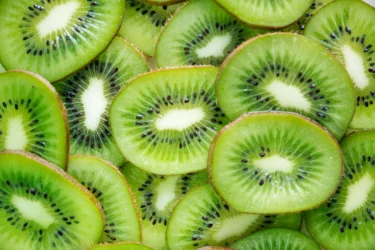
Kiwi provides abundant potassium; one cup of sliced kiwi contains about 562 mg of potassium, about 16.5% of the daily value15. Besides potassium, kiwifruit is also rich in vitamin C, fibre, and antioxidants. Eating them regularly may boost your immune system, support digestion (thanks to an enzyme called actinidin), and improve overall metabolism16.
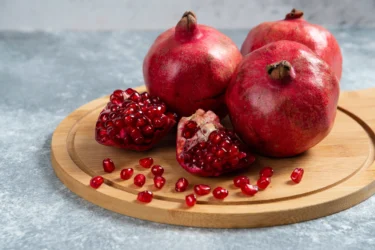
Pomegranates are a good source of potassium; one cup of 100% pomegranate juice provides approximately 533 mg of potassium, contributing about 15.7% of the daily recommended intake15. Drinking pomegranate juice can help reduce oxidative stress and support heart health by slightly improving blood pressure and related risk factors17.

Orange juice is a natural source of fruits high in potassium; one cup of orange juice delivers 496 mg of potassium, about 14.6% of the daily recommended intake3. Regular consumption of 100% orange juice may help reduce inflammation in healthy people and those at risk for chronic diseases18.
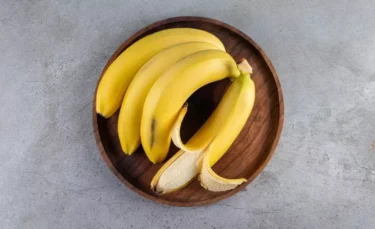
Bananas are well known for their potassium content; a medium banana contains 422 mg of potassium, which is around 12.4% of the daily recommended intake3. A study19 has shown that eating 250 g of bananas before haemodialysis (a process of filtering blood in patients with impaired kidneys) helps avoid low potassium and heart rhythm problems without causing high potassium.

Avocados are rich in potassium; half a piece of avocado contains about 345 mg of potassium, which is around 10% of the daily recommended intake20. Based on a preliminary, uncontrolled study21, adding California avocados to your daily diet may help lower total cholesterol and aid in controlling body weight.
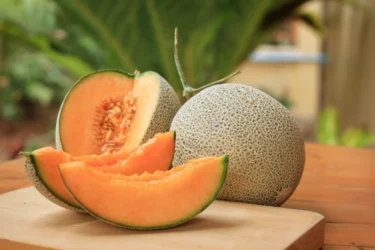
Cantaloupe is a refreshing fruit rich in potassium; half a cup of cubed cantaloupe supplies 214 mg of potassium, or 6.3% of the daily recommended intake.3 Besides potassium, cantaloupe is packed with essential vitamins and minerals that help keep you hydrated with its high-water content. This makes it a tasty and refreshing part of a healthy diet22.
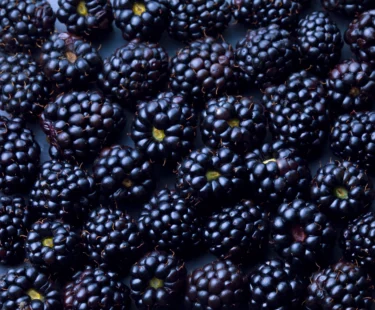
Blackberries are a good source of potassium; one cup of blackberries contains about 211 mg of potassium, contributing around 6.2% of the daily recommended intake16. Blackberries are also used traditionally for diarrhoea, ulcers, inflammation, and diabetes. They are also rich in anthocyanins, which help reduce pain and may have antioxidant effects that contribute to reducing inflammation and supporting general health23.
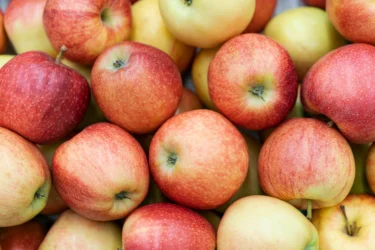
Apples contain moderate potassium levels; one medium apple with skin provides 195 mg of potassium, approximately 5.7% of the daily recommended intake3. Besides potassium, apples are also rich in antioxidants, especially polyphenols, which help reduce oxidative stress and inflammation. They also support gut health by improving the balance of beneficial gut bacteria24.
Knowing the potential benefits and the potassium content in fruits helps you choose the best options to support your health and meet your daily potassium needs. While consuming these fruits is generally healthy, remember some fruits may increase blood sugar levels. Therefore, it’s best to consult with a diabetologist before including them in your routine diet (especially if you are diabetic or at risk).
Including potassium-rich fruits in your diet is not at all complicated. You can consume the fruit raw or make some simple and delicious dishes with them to boost your intake25:
It should be noted that including fruits containing high potassium in the diet helps maintain potassium balance only when potassium levels are slightly below the normal range or for when an individual is at risk. Dietary potassium is not an alternative for moderate or severely low potassium levels; these conditions often require oral or intravenous potassium supplementation.
While potassium is essential for health, increased levels can be dangerous. Excess potassium levels, known as hyperkalaemia, may lead to serious symptoms, including neuromuscular issues such as fatigue, muscle weakness, and paralysis. It may also lead to cardiovascular symptoms, such as irregular heartbeats or even cardiac arrest1,3.
However, it should be noted that fruits (or even other dietary sources) rich in potassium alone rarely cause hyperkalaemia in healthy individuals. Hyperkalaemia typically results when there is impaired renal excretion or a shift of potassium from cells into the bloodstream.
Certain individuals should be cautious when consuming high-potassium diets or potassium supplements. These include:
Due to the above-mentioned reasons, individuals with underlying health conditions or those on long-term medication should consult a doctor before making any changes to their potassium intake to ensure a safe and balanced dietary approach.
Potassium is a vital mineral that plays a crucial role in maintaining healthy blood pressure, supporting muscle and nerve function, and promoting overall heart health. Fruits are a natural and wholesome source of potassium, making them a safe and effective way to meet daily needs, especially when included as part of a varied and balanced diet. Incorporating potassium rich fruits in the diet, such as bananas, apricots, prunes, and oranges, offers not only this essential nutrient but also other valuable nutrients that contribute to overall wellbeing. They are generally safe and very rarely cause hyperkalaemia in healthy people with normal kidney function. However, individuals with impaired kidney function or those taking certain medications should be cautious and consult a doctor before increasing their potassium intake. That said, a balanced approach in diet (consuming a combination of fruits, vegetables, and whole foods) can be a great way to support the potassium requirements of the body and at the same time offer broader health benefits, reinforcing the importance of nutritious and mindful eating to achieve your health goals.
Yes, both dried and frozen fruits retain potassium, though portion sizes vary26. Dried fruits are more concentrated, so smaller amounts provide similar potassium levels.
You should take potassium supplements only under medical advice, since most people can meet their potassium needs through a balanced diet rich in fruits, vegetables, and legumes3. Talk to your doctor if you believe you might need potassium supplements.
If you are healthy, you cannot overdose on potassium from fruits, as the kidneys eliminate excess potassium through urine. However, people with kidney disease or on certain medications need to be cautious3. Remember moderation in consumption is key.
No, they are not suitable for everyone since salt substitutes often contain high levels of potassium. People with kidney disease or those taking certain medications should consult their doctor before using them to avoid the risk of hyperkalaemia (dangerously high potassium levels)3.
Fruits provide important nutrients like folate and vitamin C, potassium, and dietary fibre. They help keep your digestion healthy, lower the risk of heart disease, diabetes, obesity, and even some cancers. They are also low in fat and calories, especially when not fried or roasted. Aim to include a variety of colourful fruits in your diet. This will give you a range of nutrients24.
Disclaimer: The information provided here is for educational/awareness purposes only and is not intended to be a substitute for medical treatment by a healthcare professional and should not be relied upon to diagnose or treat any medical condition. The reader should consult a registered medical practitioner to determine the appropriateness of the information and before consuming any medication. PharmEasy does not provide any guarantee or warranty (express or implied) regarding the accuracy, adequacy, completeness, legality, reliability or usefulness of the information; and disclaims any liability arising thereof.
Potassium is the most abundant positively charged ion (cation) inside your cells1. It plays a crucial role in maintaining normal cell function2. This is especially important in tissues like the heart, nerves, and muscles, where potassium and sodium primarily regulate the resting membrane potential and action potentials that control nerve impulses and muscle contractions1,2.
Usually, a slight increase in potassium does not cause any noticeable symptoms. Even at a moderately high level, some patients may only have subtle electrocardiogram (ECG) changes. However, significantly high potassium level can be dangerous. It can disrupt the heart’s rhythm, potentially leading to life-threatening arrhythmias, as well as causing muscle weakness or even paralysis2.
Therefore, understanding the reasons for high potassium is essential for addressing this potentially serious condition. In this article, we will explore the causes, symptoms, diagnosis, treatment, and management of elevated potassium levels, helping you understand how to recognise and manage this condition.
Potassium is a type of mineral and electrolyte that our body needs to function properly2. It’s found naturally in many foods, especially fruits and vegetables like bananas, oranges, spinach, and potatoes3.
Majority of potassium in our body is stored inside cells, particularly in muscles (around 98%). The remaining potassium (2%) lies in bones, and important organs like the liver, lungs, and brain. Only a small amount is found outside the cells, where it plays a critical role in keeping the cells healthy and maintaining their proper function3. Potassium helps regulate the body’s fluid balance, supports normal nerve signals, and ensures that muscles, including that of the heart, contract properly. It also helps maintain healthy blood pressure2,3.
Potassium levels in the blood are carefully regulated because they play a vital role in maintaining the normal electrical activity of cells, especially in the heart, muscles, and nerves.
You may be wondering, what is the main cause of high potassium? This will be discussed in the next section.
High potassium levels in the blood can occur when your body either retains too much potassium or releases too much of it from the cells into the bloodstream2. Normally, the kidneys work to keep potassium levels in balance, but several factors can interfere with this process1. Common high potassium levels causes include:
Now that you are aware of the causes, you may be worried about what if potassium is high and how it could affect your health. Let’s move to the next sections to understand this better.
High potassium symptoms often develop gradually but may be absent in mild cases; however, sudden severe elevations can cause rapid symptoms2. These can range from mild to severe and may include:
Since some symptoms of hyperkalaemia can be subtle or mistaken for other conditions, it’s important to get medical attention if you’re at risk or experiencing any unusual signs, especially if you have a known kidney condition or are on medications that affect potassium levels.
If high potassium levels are not identified and addressed in time, they might lead to serious complications4. Since potassium plays a vital role in nerve and muscle function, especially in the heart, excess potassium can disrupt normal body processes in dangerous ways. Key complications include:
Thus, it’s important to diagnose hyperkalaemia promptly and avoid complications, which may even become life-threatening.
Diagnosing high potassium in body usually begins with a review of your symptoms, medical history, and medications, especially if you have kidney disease or are taking drugs that affect potassium levels. After initial examination, routine tests are performed. Key diagnostic tests include:
The most common and reliable way to diagnose hyperkalaemia is through a serum potassium test6. It is important to get tested at a reputable laboratory because proper blood sample handling is crucial. This is because haemolysis (damage to blood cells) during sample collection or processing can falsely elevate potassium levels, a phenomenon known as pseudohyperkalemia.
Measuring the amount of potassium in your urine can help doctors determine whether your body is excreting potassium properly. Tests such as the urine potassium-to-creatinine ratio or a 24-hour urine potassium collection are especially useful in distinguishing whether hyperkalaemia is caused by kidney or non-kidney related factors⁸.
Since high potassium can affect heart function, your doctor may perform an ECG to check for changes in your heart rhythm2.
Since the kidneys are responsible for filtering out excess potassium, tests such as serum creatinine and blood urea nitrogen (BUN) may be done to assess kidney health and determine whether kidney problems are contributing to high potassium9.
Depending on your symptoms and health history, your doctor may also order tests for adrenal function, blood sugar levels, or acid-base balance, particularly if conditions like diabetes or adrenal disorders are suspected2.
Early diagnosis is key to avoiding complications. If you’re at risk due to kidney issues, medications, or chronic illnesses, regular blood tests, such as the Potassium (K+) Test, can help monitor your potassium levels and identify problems early on.
The severity of the problem and its cause will determine how high potassium levels are addressed. The intention is to deal with the root cause, protect the heart, and quickly bring potassium levels down to a safe range. Your doctor might recommend the following methods to accomplish this:
Limiting high-potassium foods, such as bananas, oranges, potatoes, tomatoes, and spinach, may be recommended, especially for individuals with kidney problems2.
If a medication or supplement is contributing to high potassium levels, your doctor may adjust the dose or switch to an alternative. Common contributors to hyperkalaemia include potassium-sparing diuretics, NSAIDs, ACE inhibitors, ARBs, certain beta blockers, and potassium supplements2,4.
To remove excess potassium from the body, doctors may use:
Note: Loop and thiazide diuretics promote potassium excretion and can help lower potassium levels, whereas potassium-sparing diuretics may worsen hyperkalaemia.
If potassium levels are dangerously high or if there are signs of heart involvement, emergency addressal is needed. This may include:
Finally, managing the root cause, like improving blood sugar control in diabetes or addressing adrenal gland issues, is essential to avoid hyperkalaemia from recurring.
Avoiding high potassium levels involves a combination of lifestyle choices, regular monitoring, and medical management, especially for those at higher risk, such as people with kidney disease, diabetes, or those taking certain medications. Here are some effective ways to avoid potassium buildup:
While potassium is essential for health, people at risk of hyperkalaemia may need to limit foods that are high in potassium. This includes2,11:
Your doctor or a dietitian can help create a meal plan if needed.
Some medications can raise potassium levels. If you’re taking drugs like ACE inhibitors, ARBs, potassium-sparing diuretics, or potassium supplements, it’s important to take them exactly as prescribed6. Never adjust or stop medications without consulting your doctor.
Nowadays, many salt alternatives are available in the market that swap potassium chloride for sodium. While this may be healthy for some people, it can be dangerous for those at risk of hyperkalaemia4. Always check labels and consult your doctor before using salt alternatives.
Drinking enough fluids, like water, helps support kidney function. This, in turn, helps your body naturally excrete excess potassium2. However, in patients with advanced kidney disease or heart failure, fluid intake may need to be restricted to prevent fluid overload, so hydration advice should be individualised by a healthcare professional.
Routine blood tests to check potassium levels are especially important if you have kidney disease, heart failure, or diabetes, or if you’re on medications that affect potassium balance. Early detection helps avoid serious complications.
Keeping conditions like diabetes, high blood pressure, and kidney disease under control reduces the risk of potassium imbalances. This may involve certain lifestyle changes or medications/supplements. Make sure to have regular follow ups with your doctor to address any underlying issues.
It’s important to seek medical attention if you suspect the effects of high potassium, especially if you have a condition that puts you at risk.
You should see a doctor if you experience2,4:
Additionally, consult your doctor if:
It’s critical to understand the significance of potassium balance for safeguarding general health, particularly for the optimal functioning of your heart, muscles, and nerve cells. While potassium is an essential nutrient, its excessive levels or hyperkalaemia can be harmful. These occur more commonly in individuals with kidney disease or taking certain medications which affect potassium excretion.
Symptoms of hyperkalaemia often develop late and may be nonspecific or even absent initially. Therefore, early detection of high potassium levels mainly relies on regular blood tests for individuals at risk, rather than symptom recognition alone. Taking proactive steps, such as managing chronic conditions, following medical advice, and monitoring potassium levels, can help control hyperkalaemia. With proper awareness and care, it is entirely possible to maintain healthy potassium levels and avoid potentially dangerous complications from imbalance.
Yes, mildly elevated potassium levels often have no symptoms2.This is why regular blood tests are important for people at risk. As potassium levels rise, symptoms like fatigue, muscle weakness, or irregular heartbeat may appear.
Many multivitamins contain small amounts of potassium, but potassium supplements should only be taken if prescribed4. People with kidney disease or on potassium-affecting medications should avoid over-the-counter potassium supplements unless approved by their doctor.
While stress doesn’t directly raise potassium levels, physical stress (such as illness, injury, or surgery) can impact hormonal balance and kidney function, potentially contributing to shifts in potassium levels, especially in people with underlying conditions2,6.
No, not always. Sometimes, a false high reading can occur due to how the blood sample was handled (e.g., if red blood cells rupture during collection, which is called pseudohyperkalaemia)2. Your doctor could repeat the blood test to make sure whether your potassium levels are abnormally high.
Disclaimer: The information provided here is for educational/awareness purposes only and is not intended to be a substitute for medical treatment by a healthcare professional and should not be relied upon to diagnose or treat any medical condition. The reader should consult a registered medical practitioner to determine the appropriateness of the information and before consuming any medication. PharmEasy does not provide any guarantee or warranty (express or implied) regarding the accuracy, adequacy, completeness, legality, reliability or usefulness of the information; and disclaims any liability arising thereof.
Breast cancer is a condition in which the cells in the breast proliferate out of control. Breast cancer comes in several forms and based on which breast cells develop into cancer, the type of breast cancer is determined1.
It is crucial to realise that the majority of breast lumps are referred to technically as a tumour but may be benign and not cancerous (malignant). Some benign breast lumps can increase a woman’s risk of breast cancer, even if the majority of them are not life-threatening. Any breast lump or change in the breast should be examined by a medical professional to determine whether it is benign or malignant (cancer) and whether it may increase your risk of developing cancer in the future.
Different areas of the breast may be affected by breast cancer. Connective tissue, ducts and lobules are the three fundamental parts of a breast. The glands that generate milk are called lobules. In order to reach the nipple, milk passes through ducts. Everything is wrapped in and held in place by connective tissue, which is composed of fibrous and fatty tissue. Most breast cancers begin in the lobules or ducts.
Breast cancer can spread outside the breast via lymphatic and blood arteries. Breast cancer is said to have metastasised when it spreads to other areas of the body.
There are several parts to the breast where cancer can start:
Occasionally, breast cancers develop in tissues other than the breast. Sarcomas and lymphomas are the names of these cancers, which are not typically thought of as breast cancers.
You must be aware of how your breasts typically feel and look. Mammograms do not always detect breast cancer, despite the importance of routine screening tests for the disease. This implies that it’s crucial for you to check your breasts routinely and look out for any changes.
The most typical sign of breast cancer is a new tumour or lump (although most breast lumps are not cancerous). Breast tumours can sometimes be soft, spherical, tender or even painful and some are painless, like a hard mass with irregular borders.
The following are some of the signs of breast cancer:
There are numerous benign (non-cancerous) breast disorders that can also cause these symptoms. Nevertheless, it’s crucial to get any new breast tumour, lump or alteration examined by a skilled medical practitioner so the cause can be identified and treated, if necessary.
Keep in mind that regular breast cancer screenings are crucial. Breast cancer can be detected early, before any symptoms are noticed, through mammography. You have a better chance of receiving effective treatment if breast cancer is detected early.
One of the most crucial things you can do to maintain your health after receiving a breast cancer diagnosis is exercise. Exercise or any other home remedies cannot help in eliminating any cancer. However, according to research, women who exercise have a higher quality of life and experience fewer side effects both during and after treatment. Additionally, studies have shown that exercise improves mood, stamina and general health and fitness. These factors are crucial for the health of the mind and body, especially when a person is dealing with something as stressful as undergoing cancer treatment.
Breast cancer may limit your ability to move your shoulder and arm or carry out daily tasks like getting dressed, taking a shower and combing your hair. Your arm and shoulder’s range of motion may be restricted by pain and stiffness5.
That is why it’s critical to perform exercises to regain movement in your arm and shoulder. Along with that, you will need to focus on exercises for overall fitness. Exercises must also be done in the post-surgery recovery stage to aid in reducing post-surgery side effects and speed up your return to regular activities.
Exercises are especially more crucial if you have radiation therapy following surgery to maintain your arm and shoulder flexible. Your arm and shoulder may still be affected by radiation even after your therapy is over. As a result, it’s critical to establish a regular exercise routine to preserve arm and shoulder mobility following breast cancer radiation treatments.

Also known as cardio, this is a sort of exercise that increases your heart rate and may make you sweat. Exercises like walking, running, rowing, riding a bike or swimming are all very effective cardio exercises. It is advised that patients diagnosed with breast cancer do cardio for at least 30 minutes five days a week (or 150 minutes total). This type of physical activity enhances heart health and aids in maintaining a healthy weight. Many people also find it helpful for stress management and preserving feelings of positivity.
Cardiovascular exercises increase blood flow to all parts of the body, help with better oxygen retention, keep the joints smooth and aid in digestion. They improve sleep quality, which in turn helps with stress management.
Studies3 can show that breast cancer survivors and those carrying the gene for the same benefit from staying active. Other studies4 have found that the chances of recurrence of cancer are lower among people who exercise regularly.

As explained, breast cancer may limit shoulder movement. The trick is not to go overboard and strain your shoulders. People new to shoulder exercises can try shoulder rotation, plank, shoulder stretch, wall pushups and lifting dumbbells that are not heavier than 1 kg each.
People who work out in gyms can try dumbbell shoulder presses, arm circles and one-arm dumbbell rows. Talk to your doctor before you hit the gym after your diagnosis or surgery.

The arms, too, must be exercised so that your daily activities can continue uninterrupted. Simple home exercises that can free up your arm are- tricep dips, wall pushups, bicep curls with gentle weights and plank.

Yoga is a great way to stretch sore and aching muscles without causing further injury. Some ‘asanas’ or postures are particularly beneficial for the chest, shoulder and arm muscles- dhanurasana, marjaryasana, uttana shishosana and garudasana.
For control, stress and anxiety, balasana, sukhasana and viparita Karani will come to your assistance.
Some exercises are best avoided when you are ill or recovering. Your body is vulnerable and the best way forward is to strengthen it with limited doses of exercise.
It is imperative that you avoid-
The start of treatment is not the right moment to start a rigorous fitness regimen. You’ll probably have days when you feel energised and days when you feel more worn out.
Breast cancer requires immediate and categorical treatment. The treatment and, in fact, the diagnosis of cancer can be stressful for the mind and body of the patient. That is why doctors recommend regular exercise to help your body cope with and respond to treatment. Exercise also speeds up recovery post-surgery. Start exercising when your doctor advises.
Ans: It is difficult to say for sure if exercise lowers cancer chances. But some studies have found that since exercise regulates the secretion of oestrogen and insulin, it may be beneficial against the development of cancer cells in the breasts.
Ans: Exercise is a simple and extremely efficient way to manage pain, improve mobility and control stress. Exercise may not directly cure you, but it will help by keeping your mind and body fit.
Ans: While exercise does not cure cancer, some exercises will help with symptom management and relieve stress. Arm and shoulder exercises like planks, wall pushups, shoulder rotation and yoga will help. Regular cardio activities like power walking, swimming and cycling are recommended based on the patient’s health.
Disclaimer: The information provided here is for educational/awareness purposes only and is not intended to be a substitute for medical treatment by a healthcare professional and should not be relied upon to diagnose or treat any medical condition. The reader should consult a registered medical practitioner to determine the appropriateness of the information and before consuming any medication. PharmEasy does not provide any guarantee or warranty (express or implied) regarding the accuracy, adequacy, completeness, legality, reliability or usefulness of the information; and disclaims any liability arising thereof.
Swollen gums might feel abnormally bulging and protruding. It is a common problem where one or many triangle-shaped areas of gum between teeth swell. Gum diseases, also called periodontal diseases, affect the gums supporting the teeth. Swelling in the gums can be a symptom of underlying gum diseases, like gingivitis1.
If you have swollen gums, you should get help from a dentist to get a diagnosis and treatment. You can also try home remedies to take care of the swelling at home. Read on to find some herbs and remedies to help take care of swollen gums at home.
The most common cause of swollen gums is bacterial plaque, a thin layer of bacteria. Plaque results in various conditions of the gums, like gingivitis and periodontitis. These conditions can give you red and swollen gums3.
Swollen gums can also be a result of1:
Swollen gums can be a symptom of an underlying health condition like gingivitis. Features of swollen gums include:
Periodontitis is the progressive stage of gingivitis, which occurs if gingivitis is left untreated. Periodontitis is characterised by symptoms like2:
Here are some natural remedies that you can use to take care of your swollen gums at home. You should try the one that works best for you. These remedies involve some commonly found herbs that you can easily find in your house.
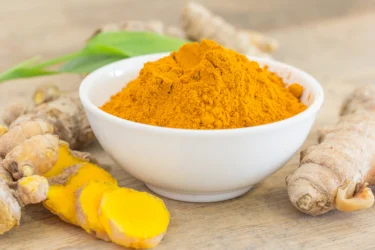
Turmeric has anti-inflammatory activity, which might help in reducing gum swelling. Turmeric is also a good pain-relieving agent, which might aid in pain relief. You can use haldi or turmeric to take care of your gums. Make a paste using turmeric, salt, and some mustard oil. You can apply this paste to teeth and gums to get rid of dental problems5. However, if you feel any irritation after using it, you should immediately rinse it off.
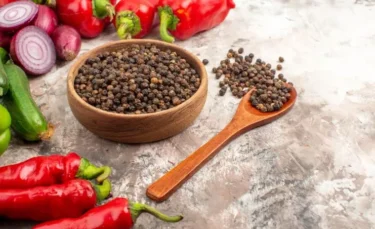
You can grind some black pepper to make powder and use this powder with mustard oil to make a paste. This paste can be used to massage the teeth and gums to steer clear of dental problems like swollen gums5.
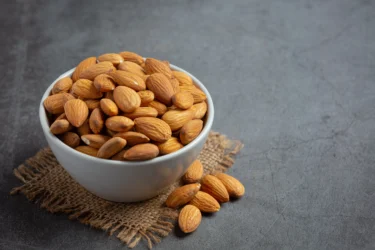
Almonds can be used as a remedy for gum problems. You can use the shell powder of almonds to take care of gum diseases. To make the powder, you can burn the shells of almonds, powder them and use them as and when required as a tooth powder5.
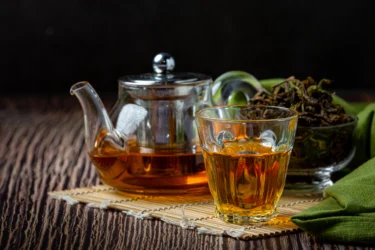
The antibacterial properties of green tea might help get rid of swollen gums4. You can try adding a few cups of green tea to your diet to help with swollen gums. However, avoid using this remedy if you are allergic to caffeine.
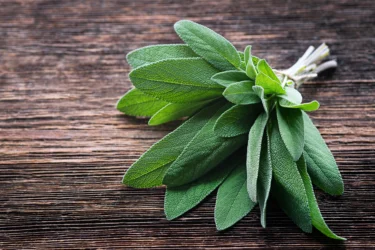
Sage is known to have antioxidant benefits, which might help soothe swollen gums8. You can use sage to make a mouthwash of your own by putting some fresh sage leaves into boiling water. Boil the leaves for some time before straining them. You can store this solution and use it as a mouth rinse. If you don’t find fresh leaves, you can use dried leaves as well.

The inflammation-reducing benefits of aloe vera make it an excellent natural remedy for swollen gums8. You can directly use pure aloe vera juice as a mouth rinse. You can also massage aloe vera gel onto the gums. Make sure to buy the aloe vera juice from a good source. Also, check if you have any allergic reaction to aloe vera; in such cases, avoid using it.
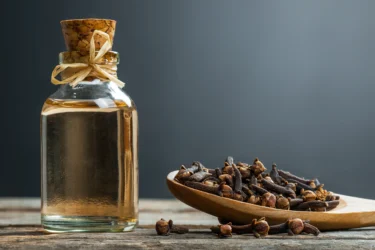
Clove oil helps prevent the growth and formation of bacteria, thereby preventing infections. Clove is also a good pain reliever and might help with pain associated with swollen gums8.To use clove for gums, mince some cloves, and use a cotton swab or cotton ball to apply the powder to your gums. Let the powder sit on the gums for some time. Rinse the clove off your gums once done.

Amla fruits contain vitamin C in ample amounts. Vitamin C is a potent antioxidant beneficial in many health conditions. You can include one fresh amla fruit in your everyday diet to help with swollen gums. You can also use amla powder by mixing it with some water. You can drink this water to take care of your swollen gums.
If you are suffering from allergies to the remedies mentioned above, you should avoid using them. Instead, choose a remedy that works best for you.

Here are some simple tips that can help you manage gum problems:
Swollen gums are a common problem that some people may ignore. However, if the changes in your gums, the redness and swelling last for more than two weeks, you need to seek medical help.
Also, visit your dentist if your gum problems are associated with:
Also Read: Best Home Remedies for Burning Feet
Swelling in the gums is a common problem and can occur at any age. Most people often neglect gum problems, as sometimes there is no pain involved. However, timely management is necessary to prevent the problem from worsening. Some common household ingredients like turmeric, black pepper, clove, and amla can be used to take care of swollen gums at home. You can also make herbal mouthwashes at home using dried or fresh leaves of sage. Make sure to take into consideration any allergies before using such home remedies. Also, if the swelling in the gums becomes painful and is accompanied by bleeding when you eat or drink, make sure to get a consultation from a dentist.
Also Read: Simple Home Remedies For Dry Throat
Natural home remedies that you can make use of to take care of swollen gums are black pepper powder, turmeric powder, clove, and amla. You can also use aloe vera, sage leaves, and green tea to relieve swelling in the gums.
Yes, swollen gums can also bleed. This bleeding might become more evident when you eat or brush your teeth3. You can contact a dentist to get a better diagnosis of your problem.
Gum problems can be prevented by maintaining good oral hygiene. Practices like brushing the teeth two times a day, using a good toothpaste, and using dental floss might help prevent gum problems from developing7.
Yes, swollen gums can signify health conditions like gingivitis, but you need to consult with a doctor or dentist to get a proper diagnosis.
If your swollen gums do not heal within two weeks and cause bleeding and pain, you should immediately contact a dentist.
Yes, you can use turmeric for swollen gums. You can use turmeric powder and apply it to your gums to get rid of swollen gums. Turmeric is known to reduce inflammation and swelling as it has anti-inflammatory benefits. However, if you are allergic to turmeric, you should avoid its use. Also, if turmeric use does not work out and the swelling persists, seek medical help.
The antioxidant properties in sage leaves are helpful in many health problems. You can make a herbal mouthwash using sage leaves. Drop some fresh or dried sage leaves in boiling water, and let them simmer for some time. Cool it and store it. Use this mouthwash to take care of swollen gums.
Yes, salt water can help swollen gums. Rinsing the mouth with warm salt water (saline solution) can reduce inflammation and soothe gum tissues. The saltwater rinse can also help to cleanse the area and promote healing. However, it’s essential to maintain regular dental care and consult a dentist if the swelling persists or worsens.
Yes, certain foods high in sugars or acids can contribute to gum irritation and inflammation. Smoking or using tobacco products can also lead to gum problems. Adopting a balanced diet and avoiding harmful habits can promote good gum health.
Yes, certain vitamin deficiencies, particularly vitamin C deficiency, can lead to gum problems, including swollen gums. Vitamin C plays a crucial role in maintaining gum health, and inadequate intake can weaken gum tissues. A balanced diet rich in vitamins and minerals is essential for gum health.
1. Gums – swollen: MedlinePlus Medical Encyclopedia [Internet]. [cited 2022 May 6]. Available from: https://medlineplus.gov/ency/article/003066.htm
2. Healthdirect Australia. Gingivitis. Symptoms, Treatments, Complications and Prevention | Healthdirect. [cited 2025 May 19]. Available from: https://www.healthdirect.gov.au/gingivitis
3. Gum disease – Better Health Channel [Internet]. [cited 2022 May 6]. Available from: https://www.betterhealth.vic.gov.au/health/conditionsandtreatments/gum-disease
4. Agarwal G, Chatterjee A, Saluja M, Alam M. Green tea: A boon for periodontal and general health. Journal of Indian Society of Periodontology. 2012 [cited 2025 May 19]. Available from: https://pmc.ncbi.nlm.nih.gov/articles/PMC3459493/
5. Ayush Division. Ayurveda offers Herbal healing. Available from: https://www.esic.nic.in/attachments/publicationfile/7d11b02e5abb4717d53b4ce05efabd21.pdf
6. Gum disease – NHS [Internet]. [cited 2022 May 6]. Available from: https://www.nhs.uk/conditions/gum-disease/
7. Gingivitis: MedlinePlus Medical Encyclopedia [Internet]. [cited 2022 May 6]. Available from: https://medlineplus.gov/ency/article/001056.htm
8. Rani N, Singla RK, Narwal S, Tanushree N, Kumar N, Rahman MdM. Medicinal plants used as an alternative to treat gingivitis and periodontitis. Evidence-based Complementary and Alternative Medicine. 2022 [cited 2025 May 19]. Available from: https://pmc.ncbi.nlm.nih.gov/articles/PMC10630018/
Disclaimer: The information provided here is for educational/awareness purposes only and is not intended to be a substitute for medical treatment by a healthcare professional and should not be relied upon to diagnose or treat any medical condition. The reader should consult a registered medical practitioner to determine the appropriateness of the information and before consuming any medication. PharmEasy does not provide any guarantee or warranty (express or implied) regarding the accuracy, adequacy, completeness, legality, reliability or usefulness of the information; and disclaims any liability arising thereof.
Excessive consumption of sugar can be bad for your health. Sugar is commonly found in a wide range of processed foods and is often listed under various names, such as agave nectar, corn syrup, and others. While sweets and baked goods are known to contain high levels of sugar, many savoury products, such as bread and tomato ketchup also contain significant amounts.
Regular intake of large quantities of sugar may contribute to various health concerns. Therefore, it is advisable to be mindful of the sugar content in everyday foods and to maintain a balanced diet as part of a healthy lifestyle1.
Excess sugar intake is linked to weight gain, especially through frequent consumption of sugary drinks like colas and juices. People who often rely on processed or fast foods may weigh more than those who eat a balanced diet. Obesity is a major risk factor for heart disease. Reducing sugar can support better health2.
Sugary snacks trigger the release of dopamine, a chemical linked to pleasure. As this effect wears off, the brain may crave more, creating a repeated cycle. High sugar intake has also been associated with an increased risk of depression in adults3.
Excess sugar consumption has been linked to increased inflammation, high levels of triglyceride levels, and elevated blood pressure levels, all of which may raise the risk heart disease. It can also contribute to fat build-up in the arteries, potentially leading to a condition known as atherosclerosis3.
High sugar intake may contribute to acne by raising blood sugar and insulin levels, which can increase oil production and certain hormone levels linked to skin breakouts4.
An excessive amount of sugar in the blood can lead to insulin resistance which is a key factor in the development of diabetes. Obesity, another major contributor to diabetes, is also commonly associated with excessive sugar intake3.
Studies have indicated that environments high in sugar promote increased cell multiplication. Excessive sugar consumption is also known to cause inflammation in the body and has been linked to a rise in cancer incidence worldwide.
If you enjoy sweet-tasting beverages with your meals, consider using natural flavourings such as lemon, mint, or orange as alternatives to added sugar. This can help reduce your overall sugar consumption. While some studies have raised concerns about potential health risks associated with certain non-sugar sweeteners, current scientific understanding remains under review. Choosing natural options where possible may support general well-being.
Dr. Ashish Bajaj, M.B.B.S., M.D. in Clinical Pharmacology and Toxicology
A diet high in sugar has been linked to signs of premature skin ageing. Some research suggests that individuals who regularly consume large amounts of sugar may experience more wrinkles and a loss of skin firmness compared to those who limit their intake. This may be due to the formation of compounds known as Advanced Glycation Endproducts (AGEs), which are produced when sugar interacts with proteins in the body. These compounds are thought to affect collagen and elastin, which are proteins that help maintain the skin’s elasticity and structure4.
Dental professionals widely recognise sugar as a leading contributor to tooth decay. Frequent consumption of sugary foods and drinks can promote the growth of harmful bacteria in the mouth, which produce acids that gradually wear down tooth enamel. While regular brushing is important, it may not fully counteract the effects of frequent sugar intake. Limiting sugar in the diet is considered an effective step towards maintaining good oral health4.
Some individuals with joint discomfort have reported experiencing reduced pain after lowering their sugar intake. Emerging research has also explored possible links between high sugar consumption and an increased risk of certain inflammatory conditions, such as rheumatoid arthritis. While further studies are needed to fully understand these connections, maintaining a balanced diet with limited added sugars may contribute to overall joint and general health5.
High sugar consumption has been associated with an increased risk of developing non-alcoholic fatty liver disease. When the body breaks down sugar, it converts some of it into glycogen for energy storage. However, excessive sugar intake, particularly from sources like fructose can lead to the liver converting the surplus into fat, which may accumulate in liver tissue over time. Reducing added sugars in the diet is considered a positive step towards supporting liver health3.
Foods high in added sugars can cause a rapid increase in blood sugar and insulin levels, often resulting in a temporary boost in energy. However, this is typically followed by a sharp drop in blood sugar, which may lead to noticeable fluctuations in energy levels. Such spikes and crashes can affect concentration, mood, and overall vitality. Choosing foods with a lower glycaemic index may help promote more stable energy throughout the day6.
Jaggery is considered to be a healthier alternative to refined sugar. While some nutritionists and dietitians may suggest it as a substitute in small quantities, individuals with diabetes or elevated blood sugar levels are generally advised to exercise caution and consult a healthcare professional before making such dietary changes.
Dr. M.G. Kartheeka, MBBS, MD (Pediatrics)
Excessive consumption of added sugar has been linked to various adverse health effects. While small amounts of sugar can be included as part of a balanced diet, it is generally advisable to reduce intake wherever possible. The following tips may help you lower your added sugar consumption7:
One of the most effective ways to reduce added sugar in your diet is to prepare healthy meals at home, using fresh ingredients. This allows you to have greater control over what you consume and helps you avoid packaged foods and drinks that are often high in added sugars.
Reducing added sugar intake is an important step towards maintaining overall health and wellbeing. By making mindful food choices and preparing meals at home, individuals can better manage their sugar consumption. Adopting these habits supports long-term wellness and helps prevent various health issues associated with excessive sugar.
Disclaimer: The information provided here is for educational/awareness purposes only and is not intended to be a substitute for medical treatment by a healthcare professional and should not be relied upon to diagnose or treat any medical condition. The reader should consult a registered medical practitioner to determine the appropriateness of the information and before consuming any medication. PharmEasy does not provide any guarantee or warranty (express or implied) regarding the accuracy, adequacy, completeness, legality, reliability or usefulness of the information; and disclaims any liability arising thereof.
When feeling low on energy or experiencing tiredness, many people instinctively reach for caffeinated beverages or processed snacks in the hope of feeling more alert. Options such as a cup of coffee, an energy drink, a granola bar, or a sugary treat may seem appealing in such moments. However, while these items may offer a temporary sense of increased alertness, they are often followed by a drop in energy levels, potentially leaving one feeling more fatigued than before.
Choosing balanced, nutrient-rich meals and snacks, rather than highly processed or sugar-laden alternatives, may help support more consistent energy levels throughout the day. Healthcare professionals often encourage thoughtful food choices as part of a broader lifestyle approach to managing tiredness and promoting general health.
Every individual is unique, and each person’s body may respond differently to various factors. However, scientific research over the years has identified several common contributors to feelings of fatigue. If none of the points mentioned resonate with your personal circumstances, there is no cause for concern. Your experience of tiredness may be due to other reasons that are not included in this list, many of which can often be identified and managed with appropriate guidance and care.
Makhana (fox nuts) is a nutrient-dense food that may help support energy levels as part of a balanced diet. Some preliminary research and traditional use suggest potential benefits, though more studies are needed.
Dr. Siddharth Gupta, B.A.M.S, M.D (Ayu)
Let us now explore a list of 12 foods that may help support energy levels and contribute to reducing feelings of fatigue as part of a healthy, balanced diet:
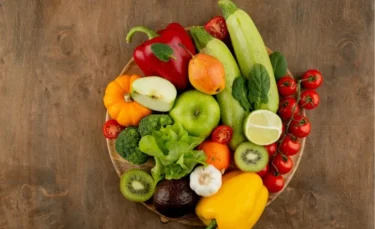
Do not overlook the benefits of a bowl of salad or a serving of fruits. Fresh fruits and vegetables are rich in vital nutrients and can play a valuable role in supporting metabolism and maintaining steady energy levels as part of a balanced diet3. Generally, the fresher the fruit or vegetable, the greater its nutritional value. These foods may help provide a more sustained release of energy, which can support the body in managing both mental and physical tasks. Including fresh produce in the daily diet is considered beneficial for overall well-being and may help reduce feelings of tiredness when combined with other healthy lifestyle practices.

A cup or two of coffee each day is generally acceptable, but relying on coffee hourly to maintain energy can be harmful to health. Instead, consider alternatives such as fresh fruit juices, milkshakes, green tea, or smoothies. These beverages provide nutritious options that may help support sustained energy levels.
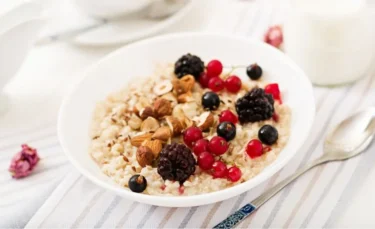
Many people skip breakfast to gain a little extra sleep or opt for less nutritious choices such as bagels, doughnuts, or high-calorie snacks. To help maintain stable energy levels throughout the day, it is advisable to choose breakfasts like oatmeal or wholegrain options such as whole-wheat pancakes, multigrain sandwiches, or quinoa. These foods are rich in quality carbohydrates that provide sustained fuel for the brain and muscles, supporting efficient functioning and contributing to the maintenance of energy1.
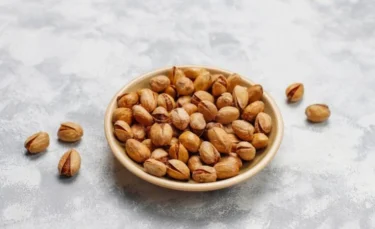
If you feel tired between meals, healthy snacking options include nuts and seeds such as almonds, walnuts, chia seeds, flax seeds, and pistachios. Sunflower seeds, Brazil nuts, hazelnuts, pecans, and pumpkin seeds are also beneficial choices. These foods provide essential nutrients, fibre, and a gentle boost of energy. Chia seeds, often referred to as a ‘runner’s food,’ are traditionally believed to support endurance and physical performance. Many nuts are rich in magnesium, potassium, and omega-3 fatty acids, which have antioxidant properties. Including these nutrient-dense snacks as part of a balanced diet may help support overall energy levels4.
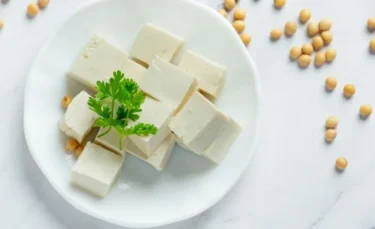
Proteins play an important role in supporting energy levels. Foods such as beans, tofu, cottage cheese, and sprouts are good sources of protein and contain nutrients like magnesium, which may help maintain consistent energy throughout the day. Including whole eggs or egg whites, as well as lean meats such as fish and chicken, can further contribute to a balanced, protein-rich diet that supports overall well-being5.

Mushrooms are a valuable source of energy, containing protein and fibre along with essential nutrients such as folate and B vitamins, including riboflavin, niacin, and pantothenic acid. These nutrients support cellular function and contribute to overall vitality6. Mushrooms can be enjoyed in salads, sandwiches, or as a snack on their own.

When feeling tired, dehydration is often overlooked. Water supports the body’s optimal functioning without adding calories and is an excellent choice to help maintain energy levels. It is generally recommended to consume around two litres of water daily to support overall well-being7.

Bananas are widely regarded as a nutritious food that may help support energy levels. They are rich in potassium, vitamins, and minerals, and are an affordable and readily available source of nutrition worldwide. Bananas can be enjoyed on their own, in smoothies, or incorporated into milkshakes as part of a balanced diet8.
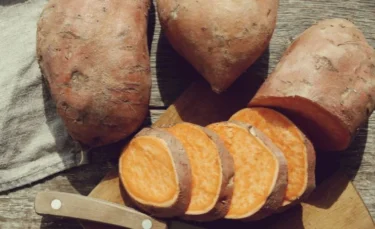
Sweet potatoes are a healthier alternative to regular potatoes when seeking quality carbohydrates to support bodily functions. They are high in fibre and rich in potassium, which helps maintain electrolyte balance and may contribute to healthy blood pressure levels. By supporting the body’s relaxation response, potassium can aid in managing stress and feelings of fatigue9.
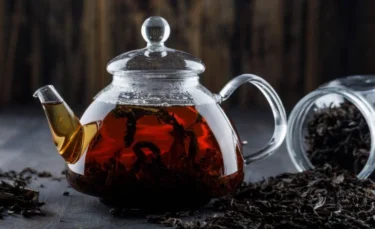
Tea contains less caffeine than coffee and includes compounds such as (-)-Epigallocatechin-3-gallate, which have been associated with supporting energy levels. However, it is advisable to avoid consuming tea close to bedtime, as the caffeine content may interfere with sleep10.
Some studies indicate that Kokum sharbat may support general well-being and help with feelings of tiredness, particularly during warmer months. However, further research is needed to confirm these effects.
Dr. Rajeev Singh, BAMS
A good night’s sleep, eating meals on time, and making healthy choices that support sustained energy can significantly contribute to feeling energetic and active. Maintaining a balanced lifestyle remains the most effective way to manage tiredness in today’s fast-paced world. Replacing processed and junk foods with nuts, whole grains, and other nutrient-rich options may help support your energy levels. If fatigue or low energy persists, it is important to consult a healthcare professional.
Disclaimer: The information provided here is for educational/awareness purposes only and is not intended to be a substitute for medical treatment by a healthcare professional and should not be relied upon to diagnose or treat any medical condition. The reader should consult a registered medical practitioner to determine the appropriateness of the information and before consuming any medication. PharmEasy does not provide any guarantee or warranty (express or implied) regarding the accuracy, adequacy, completeness, legality, reliability or usefulness of the information; and disclaims any liability arising thereof.
Ayurveda is an ancient Indian medical system. Ayurveda means the science or knowledge of life, where ‘Ayur’ means life and ‘Veda’ means knowledge.
The Ancient and Traditional practice of Ayurvedic is 5,000 years old and works on three basic three principles or doshas (Vata, Pitta, and Kapha) and ayurveda practice is based on three classical texts – the Charaka Samhita, the Sushruta Samhita, and the Ashtanga Hridaya which were written in Sanskrit over 2,000 years ago and are collectively known as the Great Trilogy.
Ayurveda takes a holistic approach to health, focusing on lifestyle, diet, and natural substances. It is important to note that while Ayurveda is a recognised traditional system of healthcare in India, its treatments should be approached responsibly and under the guidance of qualified practitioners. Individuals are encouraged to consult registered medical professionals for the diagnosis and management of any medical condition1.
Ayurvedic herbs are an integral part of the Ayurvedic medicine system. Since ancient times, these herbs have been used to help manage different diseases, promote mental clarity, boost immunity, and support healthy skin. In Ayurvedic practice, attention is given to the person as a whole, addressing the mind, body, and lifestyle rather than focusing solely on the symptoms of a condition. A wide range of herbs are used in Ayurveda to treat illnesses, with active ingredients derived from leaves, roots, flowers, and bark. These herbs are selected with the intention of promoting internal balance and supporting the body’s natural functions2.
Manjistha, for instance, may be beneficial in managing bone-related conditions. A 2020 study found that the root of Manjistha contains a compound that may be effective as a phytomedicine in the treatment of bone disorders16.
Dr. Siddharth Gupta, B.A.M.S, M.D (Ayu)
The Ayurvedic system offers a traditional, holistic approach to wellness, focusing on balance and overall health rather than isolated symptoms. Some of the benefits of ayurvedic herbs are as follows:
The following ayurvedic herbs have been traditionally valued for their various properties and uses over many years. Below is an overview of some commonly known herbs and their traditionally associated benefits:
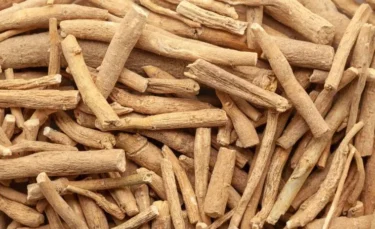
Ashwagandha is a well-known herb in traditional Ayurvedic practice, used for various purposes over many centuries. The name ‘Ashwagandha’ is derived from Sanskrit, where ‘Ashva’ means horse and ‘Gandha’ means smell, suggesting, in traditional texts, the vitality and strength associated with a horse.
It is sometimes referred to as ‘Winter Cherry’ or ‘Indian Ginseng’, and is particularly noted in Ayurveda for its traditional association with supporting the body’s resilience and overall vitality. The roots of the Ashwagandha plant are commonly used in Ayurvedic preparations5. The benefits of Ashwagandha are as follows:
Ashwagandha is a versatile herb and is traditionally available in various forms, including powders, tablets, and liquid extracts. It may be taken with or without food, depending on individual preference and practitioner guidance.
Caution: The use of Ashwagandha during pregnancy is not generally recommended unless under the supervision of a qualified medical professional. Individuals with thyroid-related conditions, particularly hyperthyroidism, should seek advice from a healthcare practitioner before using Ashwagandha or related preparations.

Brahmi, also known as Bacopa monnieri, is a well-regarded herb in traditional Ayurvedic practice. It has been traditionally used for its association with supporting cognitive health and mental clarity. The plant’s leaves are considered particularly valued in Ayurvedic literature and are often used in various preparations
Brahmi is also noted in traditional sources for its natural antioxidant and soothing properties, which have contributed to its continued use over generations.
Below are some traditionally associated uses of Brahmi7:
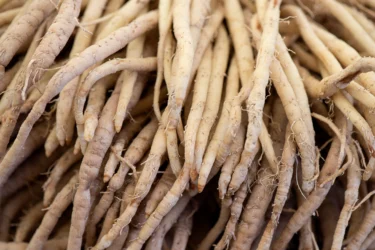
Shatavari also known as ‘queen of herbs’. is a medicinal herb with many health benefits. The presence of saponins contributes to its antioxidant properties. Shatavari is traditionally associated with supporting immune function and female reproductive health, as described in classical Ayurvedic texts.
Here are some benefits of Shatavari8:
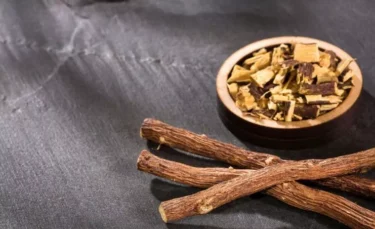
Liquorice has been used since ancient times in various traditional systems of medicine, including those of India, Greece, and Egypt. Owing to its naturally sweet flavour, it continues to be used in a range of preparations such as herbal teas, confectionery, capsules, and liquid extracts.
The benefits of Liquorice are as follows9,10:
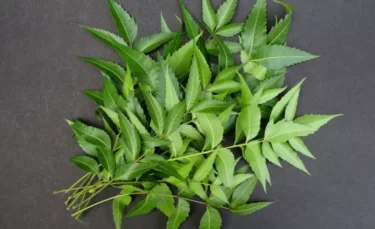
Neem has been mentioned extensively in classical Ayurvedic texts and is included in a large number of traditional formulations. It is often associated with supporting general hygiene, skin care, and internal balance in Ayurvedic practice11.
The benefits of neem are as follows:
Licorice root has been traditionally studied for its potential benefits in supporting oral hygiene. Some research17 suggests that compounds found in licorice may help in maintaining dental cleanliness and overall oral health. However, its use should be approached with caution and under the supervision of a qualified healthcare professional.
Dr. Rajeev Singh, BAMS
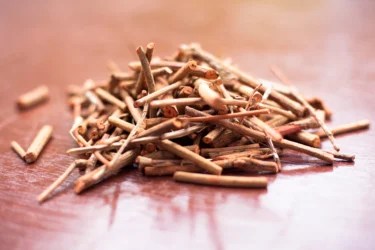
Manjistha is particularly noted for its long-standing use in Ayurvedic practices related to circulatory and skin wellness12. The benefits of Manjistha are as follows;

Amala is highly regarded in Ayurvedic tradition as a nourishing and revitalising fruit. It has naturally occurring antioxidants and helps support the body’s internal balance. The benefits of amala are as follows13:
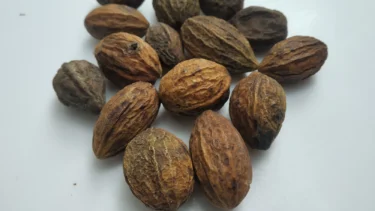
Haritaki is known as the ‘king of herbs’ in Ayurveda. In traditional Ayurvedic belief, Haritaki is associated with promoting internal balance and supporting clarity of mind, vitality, and overall well-being. The benefits of Haritaki are as follows:
Some studies18 suggest that Amla contains antioxidants and phytonutrients that may help support cognitive health. Its naturally high Vitamin C content is also believed to play a role in maintaining normal brain function.
Dr. Smita Barode, B.A.M.S, M.S.
Ayurveda offers a time-tested, holistic approach to health, rooted in balance and natural practices. When used under the guidance of qualified professionals, Ayurvedic herbs may support general well-being as part of a balanced lifestyle.
Also Read: Tamarind (Imli): Uses, Benefits, Side Effects and More!
Disclaimer: The information provided here is for educational/awareness purposes only and is not intended to be a substitute for medical treatment by a healthcare professional and should not be relied upon to diagnose or treat any medical condition. The reader should consult a registered medical practitioner to determine the appropriateness of the information and before consuming any medication. PharmEasy does not provide any guarantee or warranty (express or implied) regarding the accuracy, adequacy, completeness, legality, reliability or usefulness of the information; and disclaims any liability arising thereof.
Next Page »« Previous Page